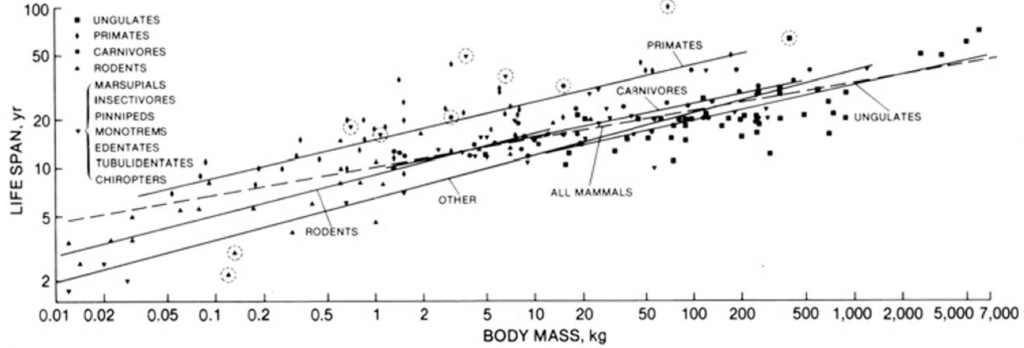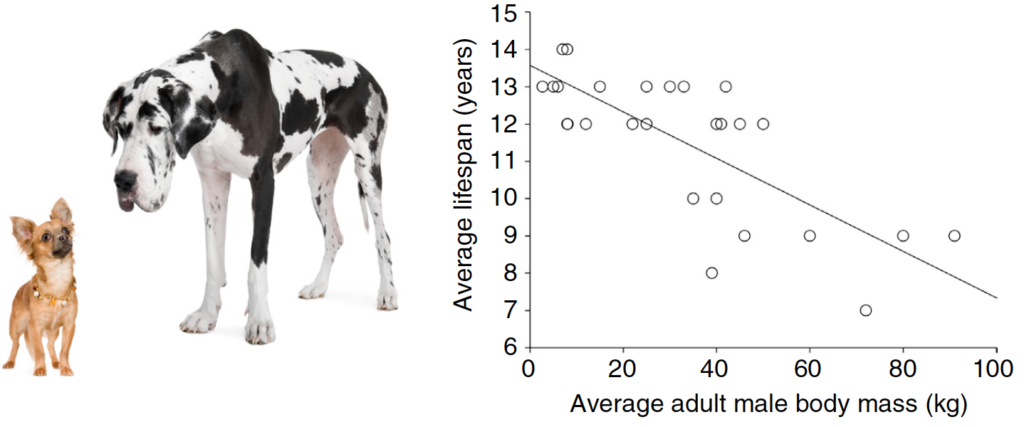One of the earliest recorded assertions that large animals live longer than small ones comes from Aristotle in 350 BC. Such unstructured observations have subsequently been supported by more rigorous scientific study. As this graph shows, there is a positive correlation between body size and lifespan in many different groups of mammals. A similar relationship holds for other classes of animals as well, such as birds.

The question of why bigger is better for lifespan, however, is less clear. Aristotle’s notion that larger animals live longer because they contain more fluid and more heat hasn’t held up very well to scientific scrutiny. More specific hypotheses about the relationship between metabolic rate, production of damaging free radicals, or ecological niche and longevity have proven more robust, but there is no single universal explanation for the relationship between body size and lifespan.
It is likely that the average and maximum lifespan of a species is influenced by many factors, some intrinsic and some extrinsic, and the general relationship between longevity and size can be exaggerated or weakened by the net effect of many variables and how they interact for each species. As a broad generalization, though, it is safe to say than there is an underlying tendency for larger species to live longer than smaller ones.
This relationship often gets turned on its head, however, when we look at the effect of size on lifespan within species. For dogs, in particular, it is well established that larger dogs age faster and have shorter lives than smaller dogs. One study showed that body size alone explained almost 50% of the variance in life expectancy between breeds.

So why do big dogs age faster and die younger than small dogs? Again, there is likely no single, simple answer. However, genetic differences are likely the key. When the degree of inbreeding is added to body weight, these variables explain almost 95% of the difference in lifespan between breeds. The enormous variation in body size across breeds is due to differences in only a few genes, and these genes likely contribute to shorter lifespans as well as larger size.










“ So why do old dogs age faster and die younger than small dogs?”
Did you mean “big dogs” rather than “old dogs”?
Yup, thanks for catching that!
our chickens live about 5years and our macaws need put in our will. both bird species about same weight and size. it will be interesting to see what they can do about aging with new genetic manipulation if only a few genes involved.
Birds are interesting because they often have lifespans much longer than expected base don their size and metabolic rate.
It gets more complicated if you include non mammalian taxa.
The data are well scattered
https://www.demogr.mpg.de/longevityrecords/0403.htm
Yes, many of the factors believed to influence lifespan involve energy metabolism, and this obviously differs dramatically between classes, especially when we compare endotherms and exotherms.